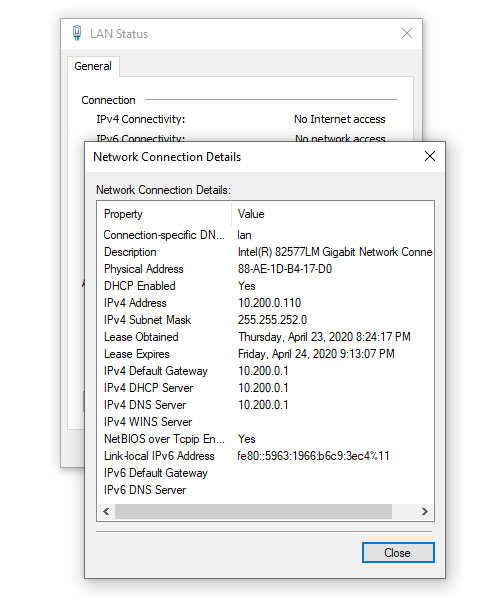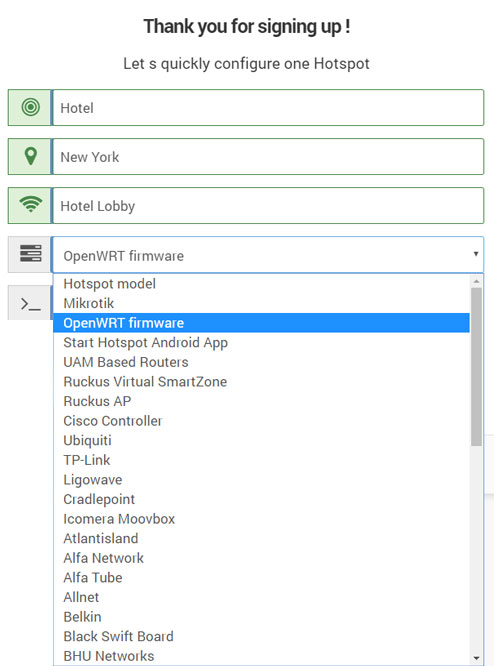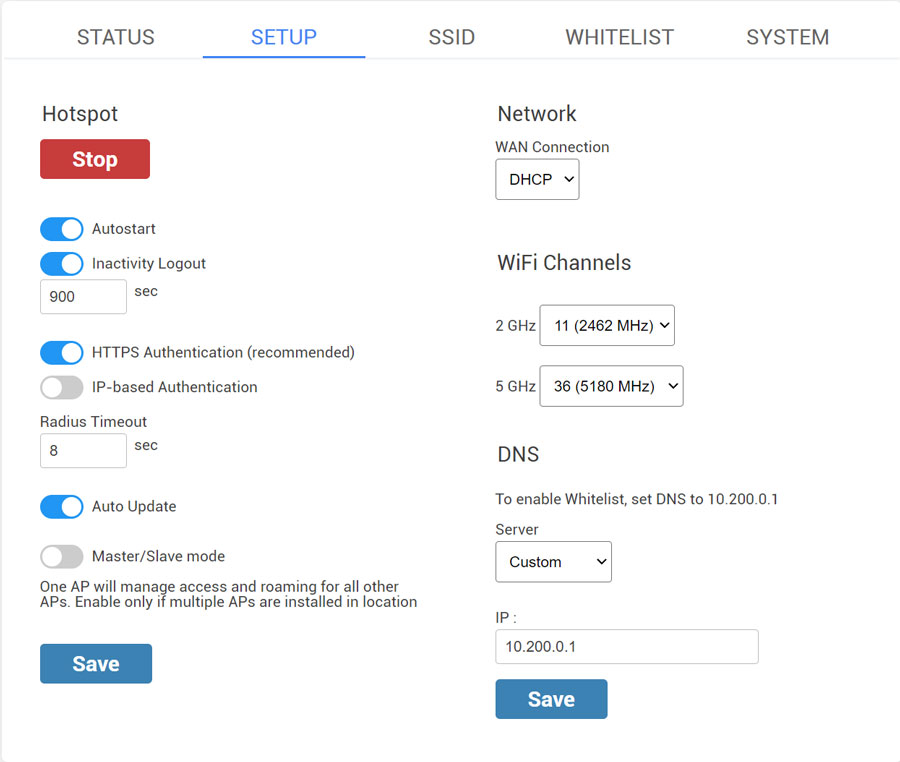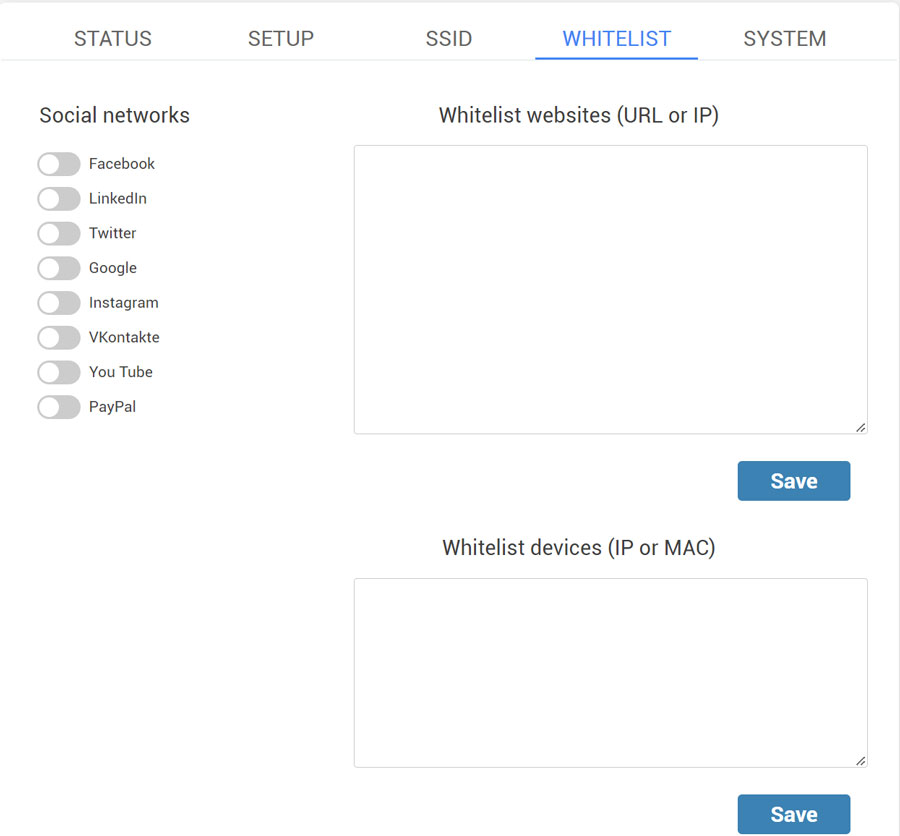Flashing the firmware using the TFTP server ( Trivial File Transfer Protocol ) is done if you cannot access the web-based setup page to do the upgrade or to fix non-working (bricked) routers.
Please note, different devices require a different setup. On some router models, instead TFTP server it is required to install TFTP client, set the different static IP address, etc…
Before HotspotOS installation, be sure and check online instructions for your specific router model.
On some specific TP-Link devices the only way to install HotspotOS is to use TFTP server. TP-Link WR 841 ND is one of these models.
Configure PC with static IP address 192.168.0.66 .
Download the standalone TFTP server from this link.
Download factory firmware for your model and rename it, for example
“openwrt-ramips-mt76x8-tl-wr841n-v13-squashfs-tftp-recovery.bin”
to
“tp_recovery.bin”
Place it in TFTP server directory, which should be by default in C:/Program Files(x86)/Tftpd32
Connect PC with one of LAN ports, press the WPS/Reset button, power up the router, and keep the button pressed for around 6-7 seconds, until the device starts downloading the file.
After that, you will see progress in the TFTP Server Tab and wait until it completes.
The router will download a file from server, write it to flash and reboot.
Do not power off the router, give it some time to boot up.
When TP-Link firmware is installed, you can proceed with router setup as instructed below.
Please reset the AP / WiFi router to factory settings to avoid problems with some previous configuration.
Connect your computer by network cable to the LAN port.
Go to the web browser and access to router configuration using default IP address e.g 192.168.0.1.
From System Tools find Firmware Upgrade.
Click on Choose File.
Navigate to the location where the HotspotOS for your model is downloaded and press on Open.
Press the Upgrade button.
Confirm that you want to upgrade.
During this process, you will see information about the processing.
Once when it is finished you will get message Software Upgraded Successfully! Restarting.
Reconnect LAN cable or Disable/Enable NIC card in order to get new valid IP address in 10.200.0.x range from router.
Start your browser and in URL field type http://10.200.0.1:8089/ to login to HotspotOS.
Username: admin
Password: admin
Press the Login button to access to Status tab.
On the HotSpotOS Status page, you can check AP MAC address, Public IP, device Uptime, Radius and Cloud status, and a number of users connected to AP.
The MAC address of your AP will be used in the SignUp process.
During SignUp, after typing HotSpot name, select as HotSpot model HotspotOS, and add your MAC address from the Status tab.
From the Setup page configure your AP.
The Hotspot is started and the Autostart and Inactivity Logout options are active by default.
Inactivity Logout is set to 900 sec. Inactivity period defines how long will the device stay logged-in without activity. This prevents repeated logins if connection temporarily breaks.
HTTPS redirect defines if HTTPS websites will be redirected to the splash page. Default and recommended is disabled, to prevent HTTPS browser certificate errors.
DNS Web Filtering – disabled
DNS Web Filter IP – 13.92.228.228
Auto Update – enabled
Master/Slave mode
One AP will manage access and roaming for all other APs.
Enable only if multiple APs are installed in a location.
By default as Network WAN Connection is set DHCP, but you can choose network protocol based on your needs. Our recommendation is to use DHCP Network Protocol.
WiFi channels – Eleven channels are designated in the 2 GHz range, spaced 5 MHz apart from each other. Those eleven channels in the spectrum are allowed anywhere in the world.
DNS – Custom
IP – 10.200.0.1
Save changes.
From the SSID tab, you can Enable SSID 1 and 2.
Configure the SSID name and enable it.
Secondary SSID 2 is mostly used for staff WiFi with WPA2 password but you can also enable Hotspot on it.

If you want to use Social network login feature or Paypal as payment gateway, enable it on the Whitelist tab and Save changes.
You can also whitelist websites based on URL, IP, or MAC.
From the System tab, you can flash HotspotOS image and change Admin password.
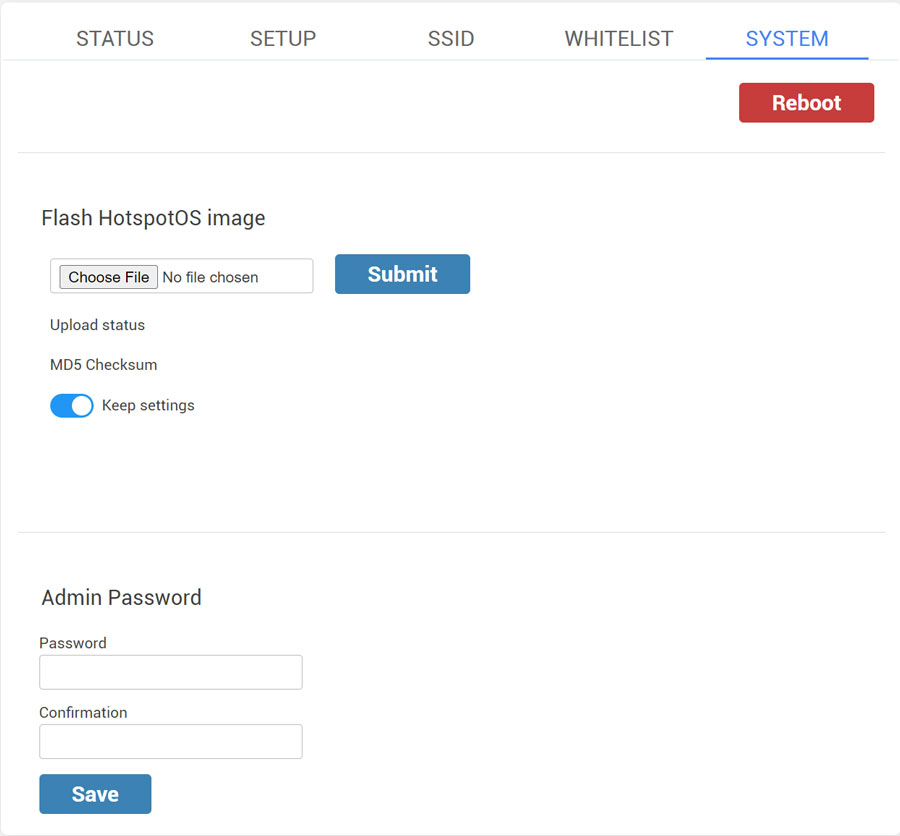 Reboot your AP, disconnect ethernet cable from your PC, connect it to your Internet source (modem, switch etc) and it will be ready for WiFi service.
Reboot your AP, disconnect ethernet cable from your PC, connect it to your Internet source (modem, switch etc) and it will be ready for WiFi service.




